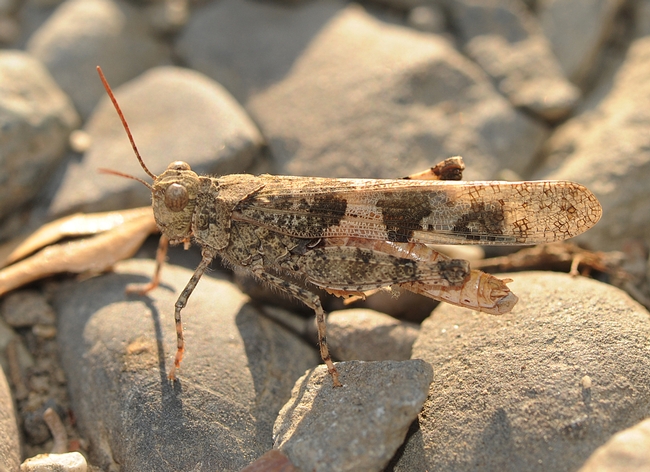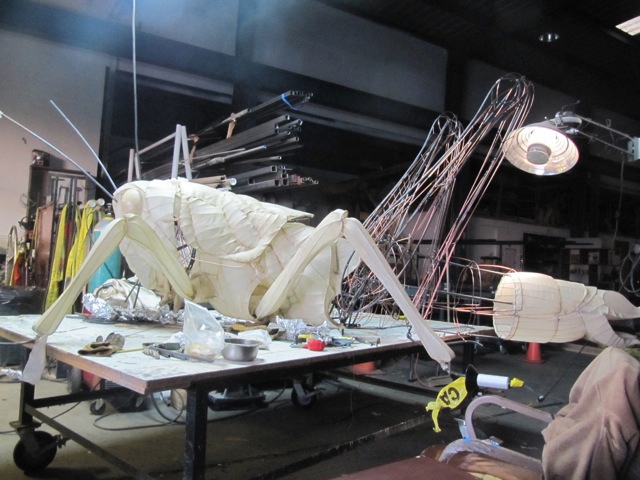
No, not the one below, a banded-winged grasshopper (family Acrididae and subfamily Oedipodinae) that we spotted west of the UC Davis campus--and identified by Steve Heydon, senior museum scientist at the Bohart Museum of Entomology.
These particular locusts will be something you've never seen before--and will probably always remember.
Sculptor Cyrus Tilton will display his work in a solo exhibition titled The Cycle that runs Oct. 4-29 in the Vessel Gallery, 471 25th St., Oakland. He's created a kinetic locust swarm and two 11-foot sculptures of mating locusts.
Morphologically correct, too.
Tilton will unveil his work at a press preview party on Saturday, Oct. 1. Until then, it's a surprise, but the photo below (of the work in progress) gives you a glimpse of what's to come.
Who is Tilton? He's an Oakland-based artist and the art director of the Scientific Art Studio in Richmond. His work includes a bas-relief of Barry Bonds' 500th home run. A 1998 graduate of the Art Institute of Seattle, Tilton was born in Palmer, Alaska in 1977 and spent his early years in a one-room cabin near Anchorage. His parents, he recalls, embodied the "back-to-nature movement" of the 1960s.
The Cycle "explores the parallels between locust swarms and humanity's habits of mass consumption and overpopulation, throiugh sculpture and site-specific installation," says Vessel Gallery director Lonnie Lee.
Of his work, Tilton says: "I am making a huge generalization but a lot of people I know work in offices and behind computers. I am not judging them because people have to make a living. But are we becoming more like insects? When I drive by an apartment building, I can’t help but see it as a hive. Seems like compartments for individuals to live in. We are connecting to one another in ways that look to me like we’re worker bees or worker ants, feeding the queen ant. Are we more insect-like in our behavior? And is that bad? Or maybe we are closer to insect hierarchies than we like to think.”
Lee describes Tilton's work as "a fine example of an artist who taps into the collective subconscious of humanity. The Cycle reveals the self-defeating and contradictory behaviors of society. Most will be moved to discomfort and reflection. Hopefully the audience will experience both an internal shift and a change of behavior. I urge everyone to see this show, as being enveloped by a giant locust swarm just might open pathways to our salvation.”
Fifty percent of the net sales of "Individuals" (the site-specific kinetic installation) will benefit the Alameda Food Bank.
Admission to show, which can be viewed Tuesdays through Saturdays from 11 a.m. to 6 p.m., Oct. 4-29, is free. A reception is set Friday, Oct 7 from 6 to 9 p.m. In addition, Tilton will talk about his work from 2 to 4 p.m. Saturday, Oct. 8, discussing his processes, thoughts, and approach toward creating this body of work.
"Are we insect-like in our behavior?"
"Are we like worker bees or worker ants?"
The Cycle should prod us to ponder those questions.
Attached Images:

This grasshopper, aka locust, is a banded-winged grasshopper, family Acrididae. (Photo by Kathy Keatley Garvey)

A work in progress by Oakland-based artist Cyrus Tilton. (Courtesy Photo)